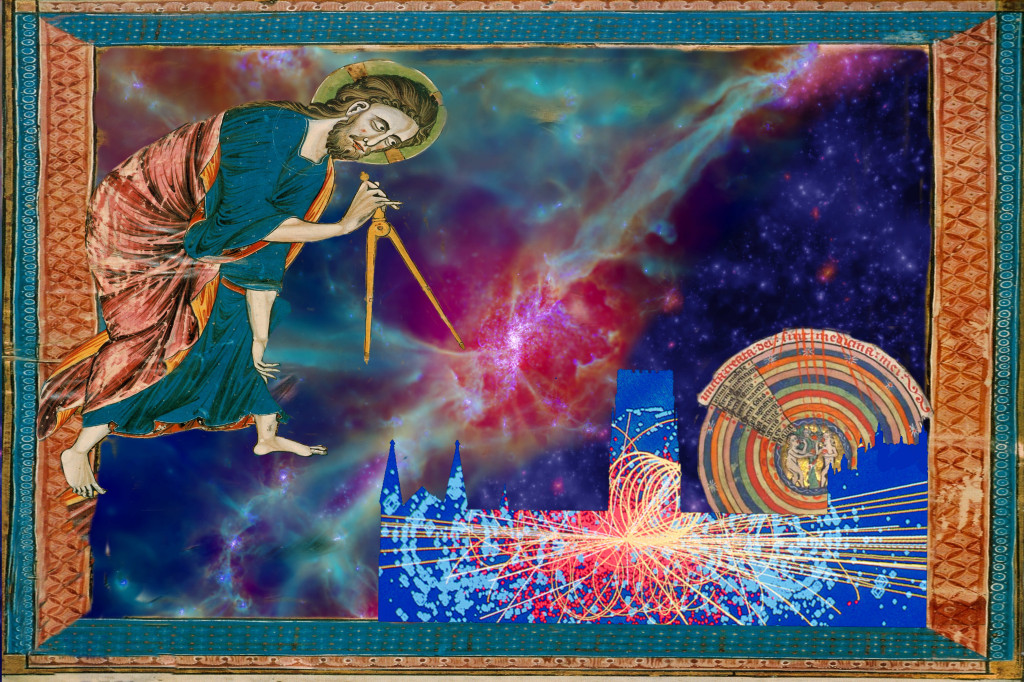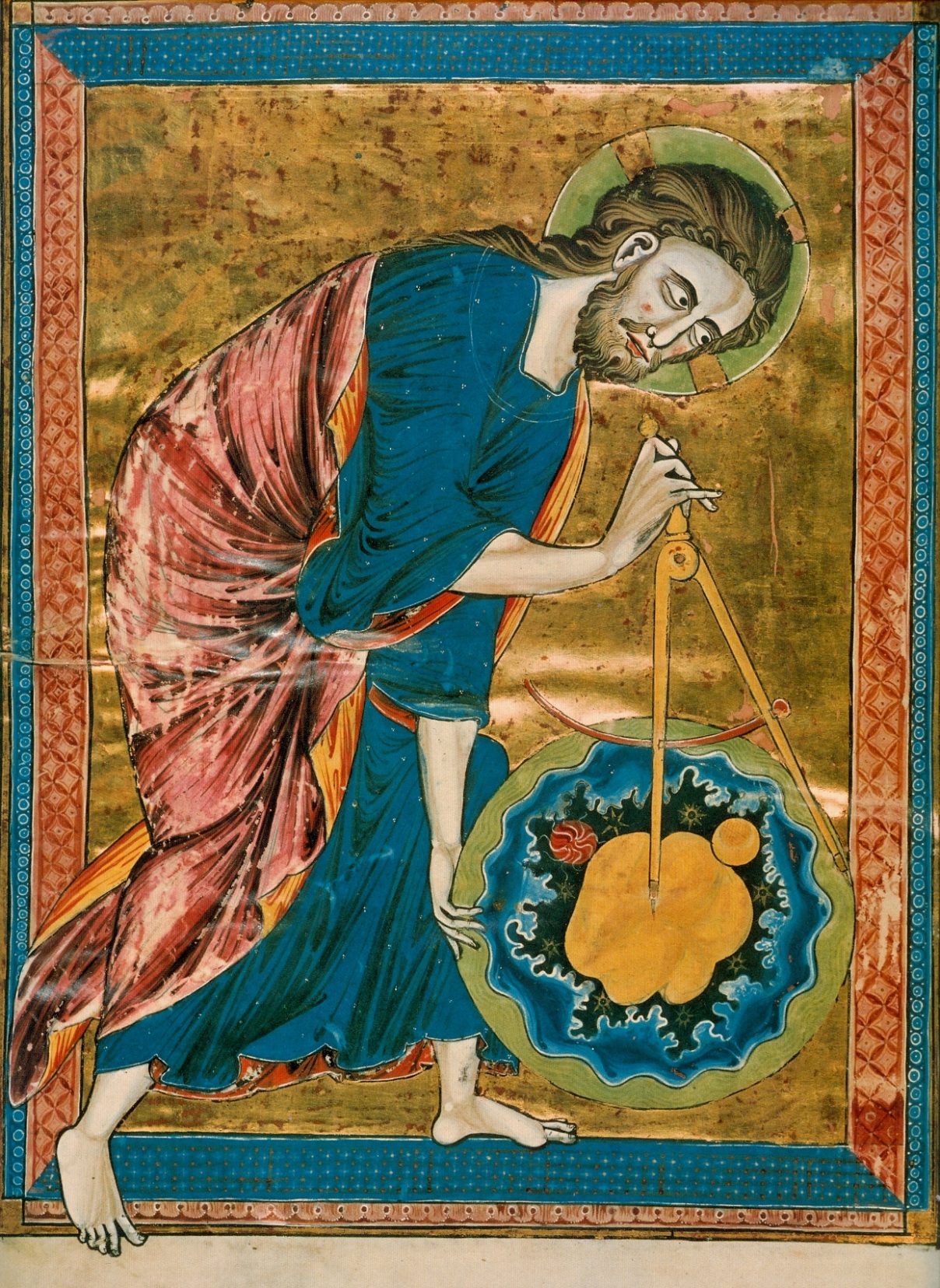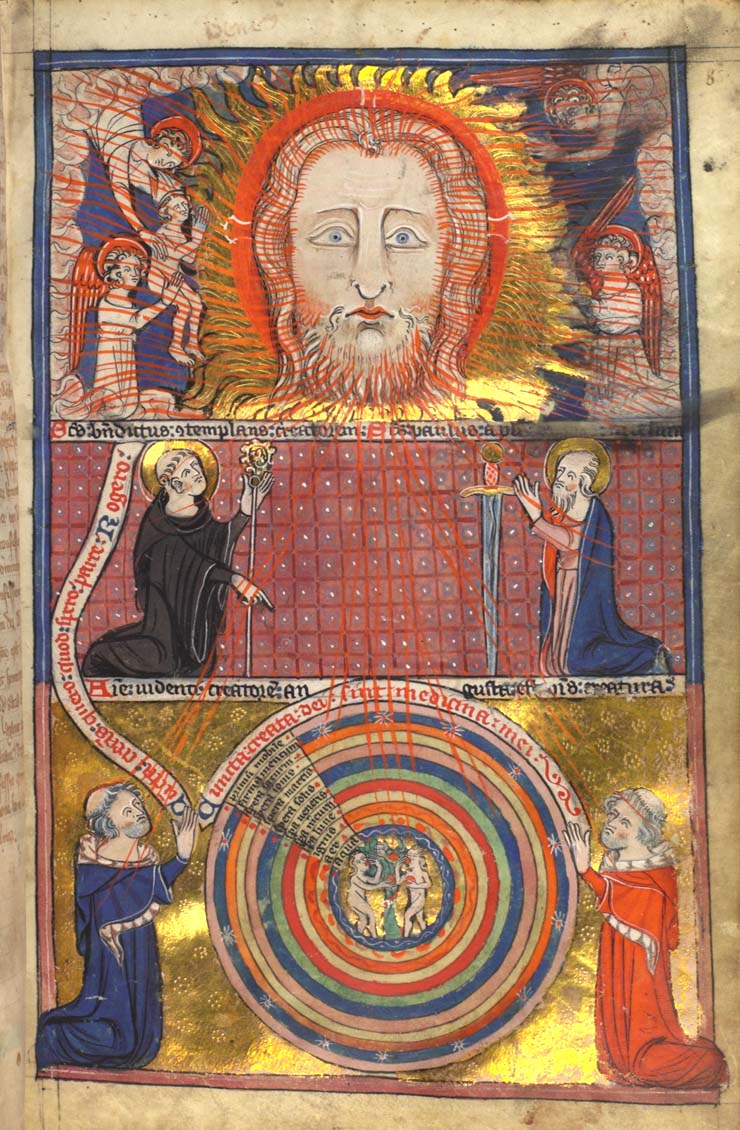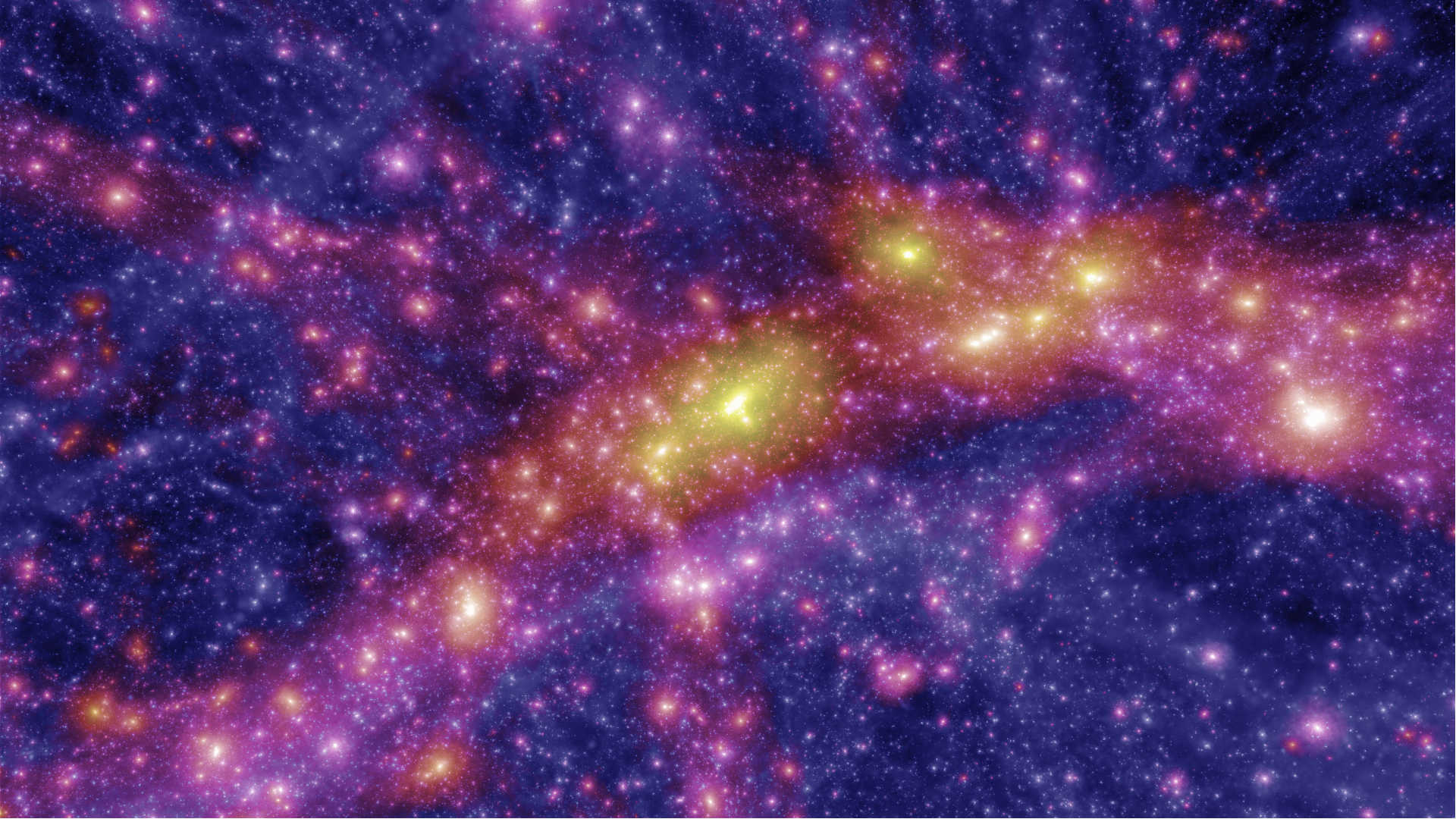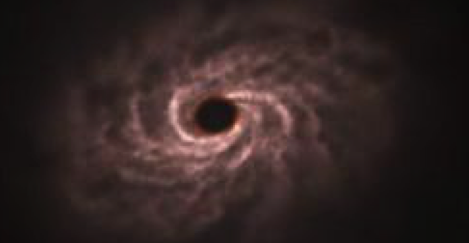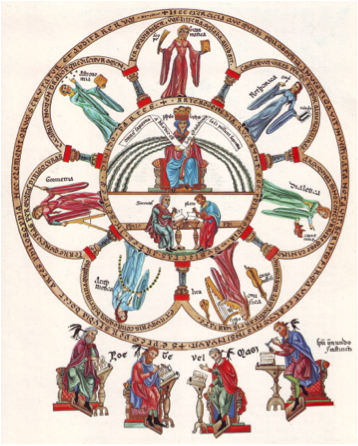Inside the World Machine
Inside the World Machine



The World Machine, the centre piece of Lumiere 2015, is a celebration of cosmology: mankind’s search to understand the origin of the Universe. Here, we take a look inside the World Machine and explain a little more about the science and history behind the spectacle.
The Big Bang
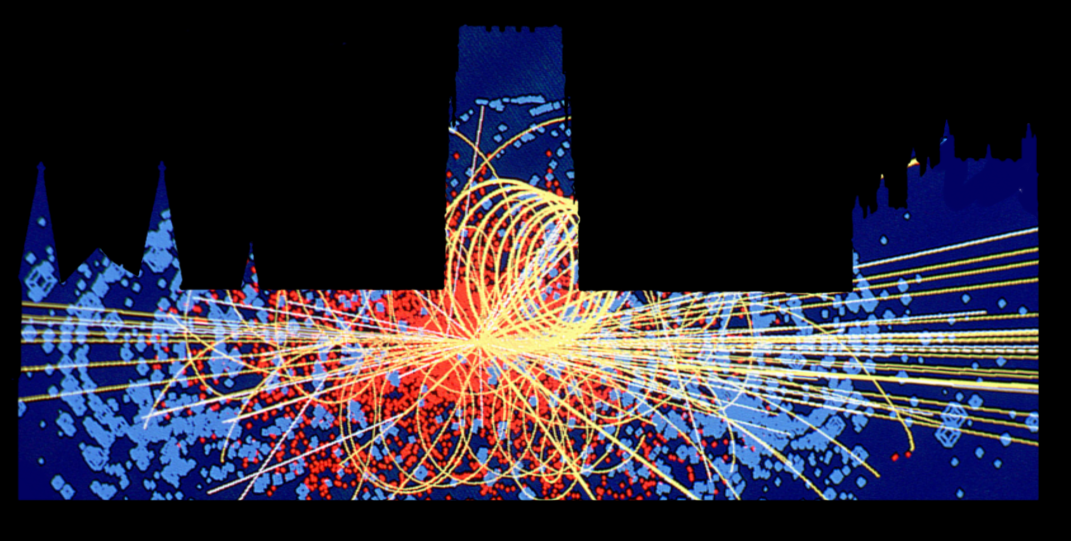
The Universe begins. The 20th century saw a remarkable leap forward in human understanding of the natural world, most famously captured in Einstein’s equation “E=mc2”. Matter and energy are one and the same at the start of the Universe. Equipped with new mathematics, mankind can now contemplate the creation of the Universe: an incredibly rare occurrence in an infinite sea of possibilities. As the Universe chances into existence, it expands rapidly and the energy of the Universe separates into matter and light. A firework display of new forms of matter comes into existence, with each explosion a new form of matter comes into existence. This phase of the Big Bang finishes with a last flash of light. We see this echo today as a faint microwave glow, but as the Universe continues to expand, it seems destined to fade away to nothing.
Medieval Cosmology
Astronomy (the study of the stars) and Cosmology (the study of the Universe) are not new sciences. Ancient Babylonian astronomers charted the motions of the planets; in antiquity, Greek philosophers, such as Plato and Aristotle, explained their motion and contemplated their nature. But many of these ideas were subsequently lost from the western world, to be rediscovered only in the 12th and 13th centuries, along with medieval Islamic and Jewish engagement with ancient thought. Robert Grosseteste (c. 1170-1253) was one of the most important figures in this rediscovery. Exploring ancient cosmology, but within a Christian framework, he uncovered a new idea. It is intriguing to imagine that he might have lectured on his discovery when he visited Durham. If the solidity of matter was the result of the interaction of matter and light, he could explain the creation of the Universe. It was the result of Physics. It would start with light and matter compressed into a tiny point: a medieval form of the Big Bang.
Robert Grosseteste’s Ordered Universe
In Robert Grosseteste’s Universe, the interaction of light and matter creates a set of concentric celestial spheres, ordered around the Earth. The outer spheres carry the heavens, stars, the wandering planets, the sun and the moon. The spheres rotate at different speeds resulting in their observed motions across the sky. In Grosseteste’s model, the process that forms the celestial spheres fails inside the orbit of the moon. This leaves the world we live in, containing the ‘elements’: Earth, Air, Fire and Water. While there is perfection in the heavens, the world around us is susceptible to change and decay.
Light and Enlightenment
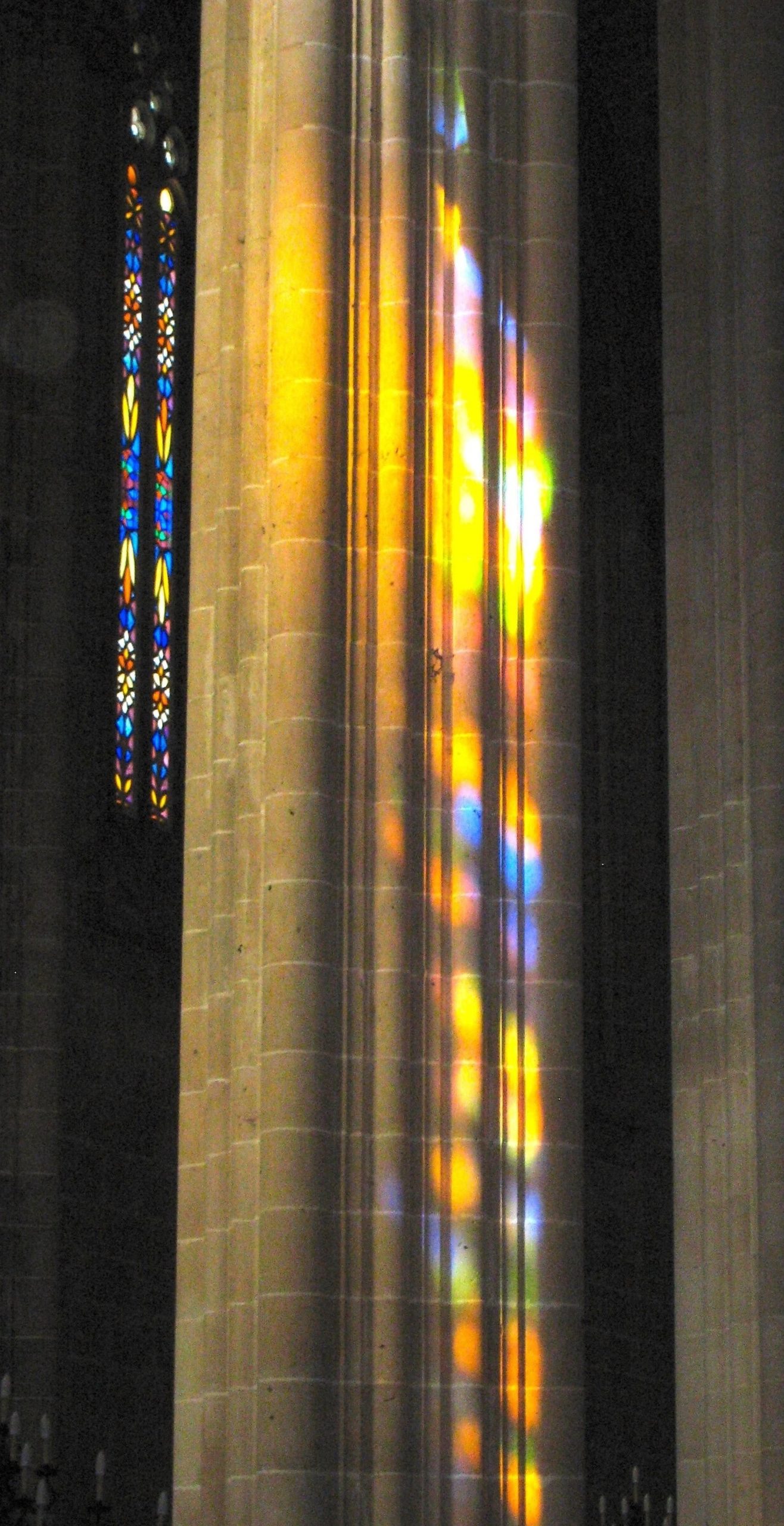
Light has many associations. Light mediates the creation of Robert Grosseteste’s Universe. Light signifies enlightenment and is a link between the temporal world and eternity. The Christian Bible states that God is light, that he dwells in light inaccessible, and light is that which reveals the beauty and order of creation. In the modern world, light is understood as a wave of oscillating electricity and magnetism. Light from the Sun brings life to the earth; the formation of the first star will end the dark ages of the Universe.
Recent work by Durham University’s Ordered Universe collaboration has shown how sophisticated Robert Grosseteste’s understanding of light and colour was. He invented a way to classify colours based on the rainbow, and he knew the principles that would lead Gallileo to create the first astronomical telescopes, almost 400 years after his time.
Dark Matter
The formation of stars requires that matter is squeezed to such a dense state that it ignites nuclear fusion. But how is the matter of the Universe collected together when it is initially expanding so fast? The answer is the Dark Matter. This unseeable form of matter dominates the gravity of the Universe, collecting together everything the universe contains to make web-like structure. This Cosmic Web is the architecture of the Universe, creating the invisible skeleton beneath the observable Universe. Although there is a great deal of evidence to show that Dark Matter exists, its nature is mysterious. Quite possibly it is a new type of particle, that is waiting to be discovered with largest of mankind’s machines, the Large Hadron Collider in Geneva.
The Formation of Galaxies
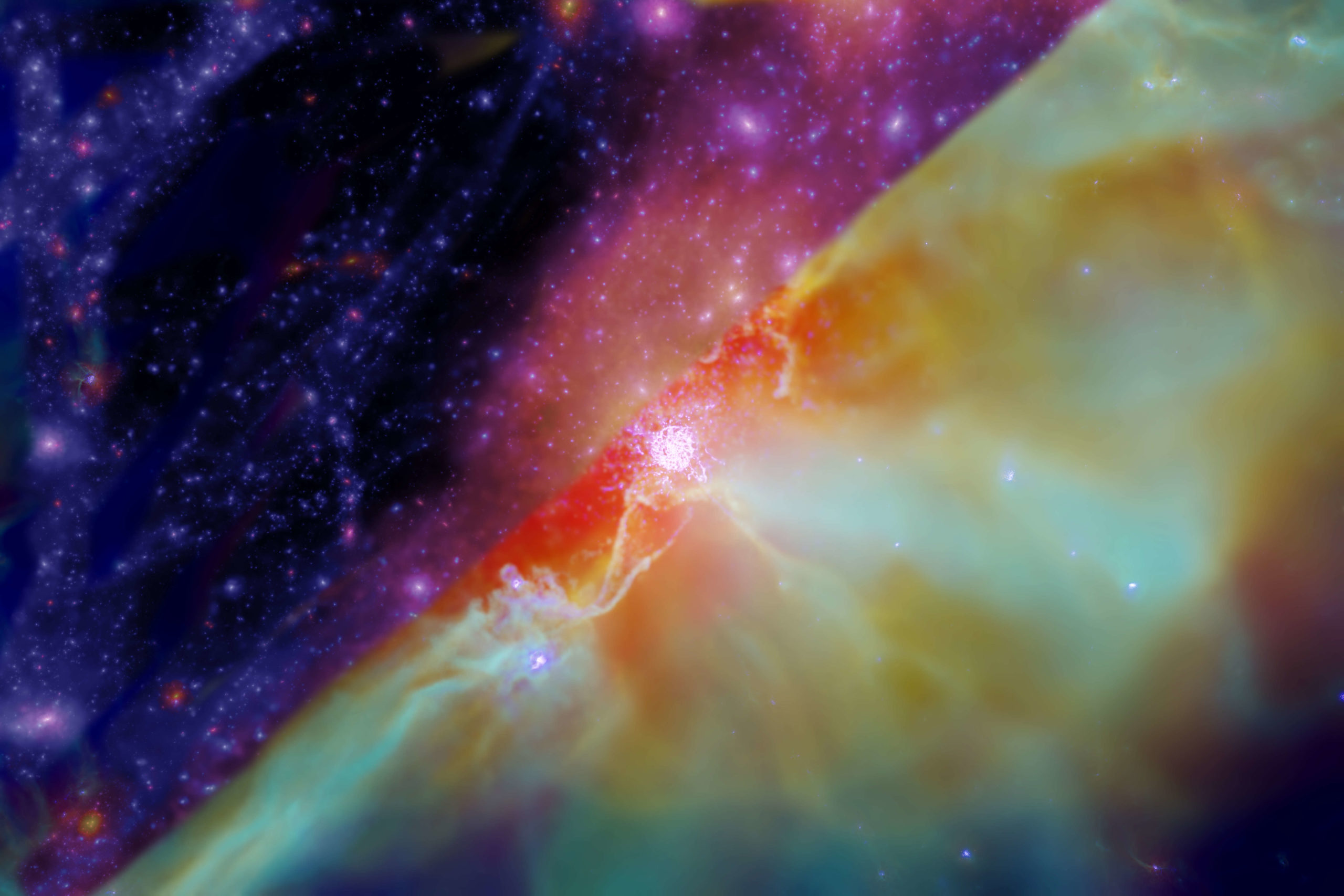
Galaxies are collections of billions of stars that form within the Dark Matter’s architecture from swirling clouds of gas and dust. Recently, researchers at Durham University’s Institute for Computational Cosmology have been able to recreate this complex phenomenon inside their super-computer. This virtual act of creation mimics the details of galaxies in the Universe in remarkable detail, making it almost impossible to distinguish the synthetic universe from our own. The computer universe is a powerful new tool allowing astronomers to understand the objects they see in the night sky in new ways.
Black Holes
Black holes are enigmatic and violent objects. They are predicted by Einstein’s theory of gravity: regions of the Universe that have grown so dense that they suck the surrounding matter inside them. Recently, astronomers have discovered that black holes have a profound effect on the Universe, setting a limit to size of the most massive galaxies. By cannibalising the galaxies in which they reside, making them sterile and devoid of new stars, they prevent galaxies growing much larger than our own galaxy, the Milky Way. This is a remarkable discovery: the fate of the Universe seems to lie in the hands of something so small and dense that even light cannot escape it.
Our Place in the Universe

It is often hard to appreciate our place in the Universe. Galaxies, like our MilkyWay, are spinning disks of 10s of billions of stars. It takes light 100 000 years to cross from one edge of the galaxy to the other. The space between the stars is vast. Yet around each star there may be a disk of planets, many pock-marked by collisions with asteroids, but a few with delicate blue-green atmospheres like that of the earth.
The Teams Behind the Event
The Lumiere event is the result of a collaboration between artist, scientists, historians and philosophers. You can find out more about the modern day science by following these links to the Eagle Simulation project at Durham’s Institute for Computational Cosmology, and about the medieval science and its history by following the link to the Ordered Universe project. Our collaboration crosses the boundaries of science, mathematics, music and art. In the spirit of the medieval Quadrivium there are no boundaries for human knowledge.
The Project teams:
Institute for Computational Cosmology: Prof Richard Bower, Prof Carlos Frenk, Stu McAlpine, Sownak Bose, Dr John Helly, Mr Myles Mitchell, Dr Nigel Metcalfe, James Trayford, Dr Mark Swinbank, Dr Tom Theuns, Dr Michele Fumagalli
Ordered Universe Project: Dr Giles Gasper, Dr Hannah Smithson, Prof Tom McLeish, Dr Neil Lewis, Dr Cecilia Panti, Dr Sigbjorn Sonnesyn




